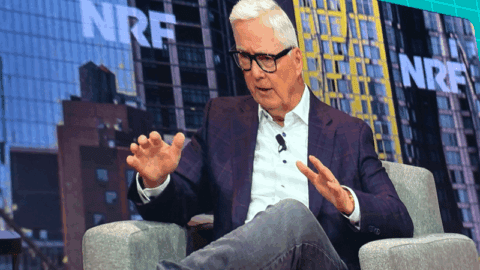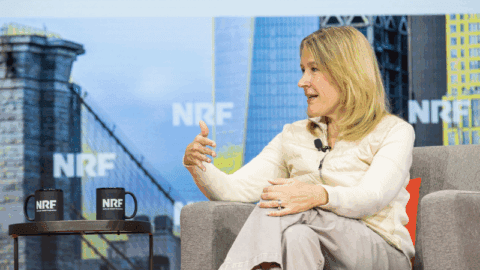We all know that Amazon is a business disruptor. What we collectively do not seem to understand is how the industry’s shifting roles is undermining the value chain for both the writer and the reader.Could Amazon be simply using the book to build its m-commerce empire? Is the book industry a necessary sacrifice: mobile commerce road kill?
Book Countdown: 7 Steps
Here are the CliffsNotes on how the book industry turned on its ear:
1. Bad-Boy Barnes & Noble: In the 90’s Barnes & Noble open up super store after super store across America. They become the Wal-Mart of books with the same vendor-facing attitude. Publishers were forced to grin and bear the harsh Barnes & Noble business terms: challenging discounts, sling-shot mechanize return policies.
2. Amazon Cloud: Ten years later, Amazon reinvented book browsing and shopping and Barnes & Noble opened coffee shops and began selling household furniture. Smaller publishers and independent bookstores began to vanish.
3. The E-book: In 2007, we saw the first Kindle, the harbinger of a new power game and more importantly a new relationship with the mobile consumer. The Kindle become the new storefront further threatening the first market disrupter, Barnes & Noble. In order to promote its Kindle device, Amazon sold electronic books below wholesale prices. A tactical loss. Owning the commerce platform was the ultimate reward for Amazon.
4. Macmillan’s Counter Attack: This revenue model is understandably suboptimal for the publisher. Led by New York based Macmillan Publishers the industry challenged Amazon’s hostile business model. Amazon pulled Macmillan content from its site. Macmillan held ground. Amazon caved. Round one.
5. Vanity Press: Amazon offers “publish direct” capability for writers on a 70/30 royalty share across the Kindle, Amazon Cloud, and the free Kindle APPs. Where the traditional publisher/author is 85/15, this is an attractive option. The creative à agentàpublisher à distributor relationship become disintermediated. Touted thriller writer John Locke joined the Kindle Million Club (authors who have sold over a million books). And then there is the tenacious Amanda Hocking who became a successful self-published author after receiving multiple rejections from traditional houses. (However, the Million Club is an elite club and I would hazard a guess that there are a many other would-be writers that will never go beyond vanity press.)
6. Slippery Slope: Book stores (Barnes & Noble) and Publishers (The Perseus Books Group) launch self-publishing eBook services (PubIt! and Argo Navis respectively) with similar flattering revenue shares. With all stakeholders playing all the roles, the value chain is breaking up.
7. The Kindle Fire: Combining commerce with the immersive Kindle experience is the final frontier. Layering in Cha-Ching into the armchair reader is a natural and powerful evolution of the bookstore. Amazon is so confident that they are selling the unit at a loss ($199 for $210 unit cost)
Is this the seven-bullet epitaph for the book publisher? John Biggs blogs nostalgically, “While I will miss the creak of the Village Bookshop’s old church floor, the calm of Crescent City books, and the crankiness of the Provincetown Bookshop, the time has come to move on.”
Move On? The question is where to.
The book is lost in the app store and the cloud is crowded with vanity press. With triple-digit growth in self-publishing it is difficult to know where to go for audience, writers are flummoxed. With books self-published on the app store and crowded cloud in growing numbers, readers are flummoxed.
Writers like Jim Kukral can now go to the web to raise funds for their next book (Remarkably $16,000 in a week). Kukral can now say that “The walls are crumbling down and aggressive and smart entrepreneurs are running through the gates to grab their share of self-publishing gold.” But writers seeking gold would be ill-advised to follow Mr. Kukral model on every publication.
So how does the writer reach audience? Amazon offers new reach and readers. But who is curating the explosive proliferation of content. It is the social recommendation engines? What is the bewildered publisher’s new role? And more importantly, how do they establish a bulkhead in the new value chain? (Guaranteed the solution is not for the publisher to offer multimedia extras such as video and audio commentary with their eBooks.)
Relating The Book Industry To Retail As A Whole
I am struck by the age-old process that allows a book to percolate (sometimes arduously) from manuscript to agent to editor to published work. In this process the publisher has always been a curator. To survive and fight the Amazon deadlock, the publisher has to learn from Amazon. If Amazon sees the book as a means to its commerce ends, the publisher needs to see the book as a means to engage with the reader directly and build a direct curational relationship.Retailers can learn from this lesson: don’t get left behind when new technology takes over.
When I buy a book, I make a content selection. If the book lives up to my content needs, the publisher should request for an opt-in relationship to sell more targeted content. The publisher needs to work with the author to build a targeted relationship with the reader in this category. If-you-like-this, you-will-like-this opt-in is essential.
If the publishing industry can retain its credibility as the purveyors of content, they can build a targeted CRM relationship with the customer, selling target stuff to this person, not once but many times.If other retailers can retail their core credibility, they too can move successfully into the future. The mobile content aggregator never sold one ringtone (too much work for the publisher and for the buyer). The mobile content aggregator sold a subscription. The mobile consumer paid for music curation. (And a pretty penny at that.)
The trick for all retailers is to learn from mobile commerce.












